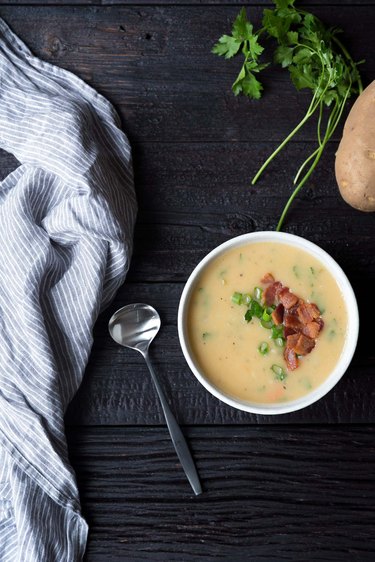Potato soup is one of those perfect winter comfort foods. There are many variations out there from the minimalist soup to the fully loaded version. This recipe falls somewhere in between, though there's room to kick it up even further or take it down a notch, depending on your mood. It's rich without being overly decadent, and it's especially perfect for chilly winter nights.
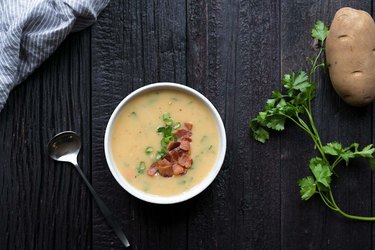
Video of the Day
Things You’ll Need
-
5 slices bacon, diced (See Step 1 for vegetarian alternatives)
-
2 cups diced yellow onion (approximately 1 large)
-
1 cup diced celery (approximately 2 ribs)
-
1 cup peeled and sliced carrots (approximately 2 medium)
-
Optional: 1 clove garlic, minced
-
4 russet potatoes
-
4 cups chicken or vegetable stock (homemade or low-sodium)
-
1/4 cup heavy cream, or to taste
-
1/3 cup roughly chopped fresh parsley
-
2 1/2 teaspoons kosher salt, or to taste
-
1 teaspoon ground black pepper, or to taste
-
Optional garnishes: sliced scallions, grated cheddar cheese, sour cream
Step 1: Gather Your Ingredients
Bacon is wonderful both as a crisp, salty garnish, and as a fat for cooking the vegetables, but it can easily be omitted from this recipe if you're seeking a vegetarian soup. To omit the bacon, simply skip to Step 3 of the recipe, and start by adding 2 tablespoons of unsalted butter or extra virgin olive oil in place of the bacon fat.
Aside from potatoes, the vegetables used in this soup are traditionally known as mirepoix: onions, celery and carrots. The carrots add a nice sweetness, but they also add a slight tint to the soup. It's not very noticeable, but you can choose to omit them if you would prefer a more neutral color.
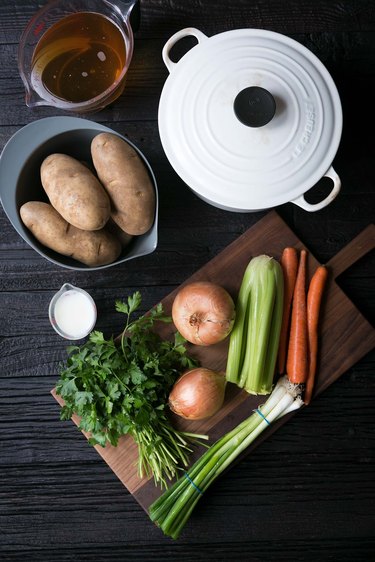
Step 2: Cook Bacon, Reserving the Fat
In a large Dutch oven or heavy-bottom saucepan, cook the bacon over low heat until the fat begins rendering into the pot. Slowly turn the heat up to medium-low, stirring frequently, to continue extracting the fat and cooking the bacon. Once the bacon is crisp, approximately 5 minutes, remove from the heat. Use a slotted spoon to transfer the bacon to a paper towel-lined plate and set aside. Discard all but 2 tablespoons of the bacon fat.
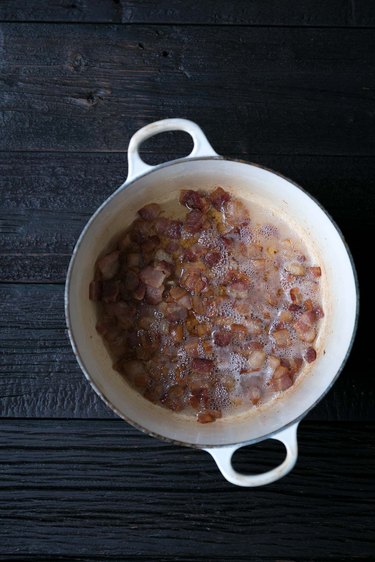
Tip
Instead of discarding, you can store the leftover bacon fat in your refrigerator for cooking. It's an excellent base for fried eggs!
Step 3: Add the Onions, Celery and Carrots
Return the pot to the heat and add the onions, celery and carrots, as well as the garlic if using. Over medium-low heat, stir the vegetables, scraping up any brown bits that might have formed on the bottom of the pan from the bacon, and incorporating them back into the vegetables.
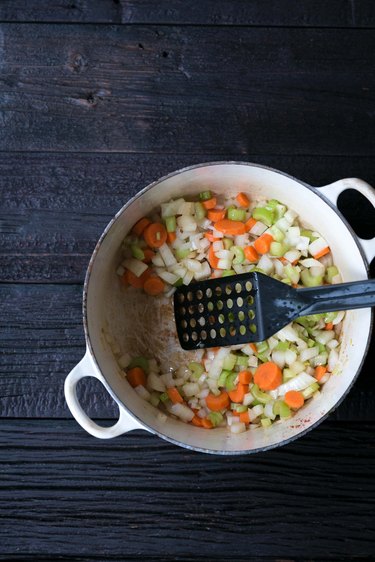
Step 4: Peel and Dice the Potatoes
While the vegetables are cooking, peel and dice the potatoes — and then add to the pot. It's a good idea to stir the vegetables periodically, so dice and stir in one potato at a time. This will also help keep the potatoes from oxidizing.
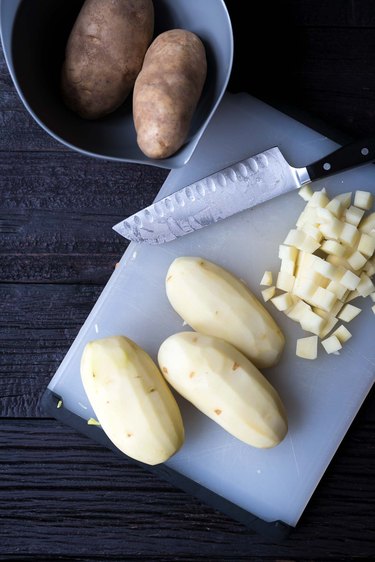
Tip
Potatoes will sometimes turn a pinkish color when exposed to air for an extended time. This is known as oxidation. It won't effect the flavor. Heat will stop the process, as will acidic products like lemon juice or vinegar. If you would prefer to dice the potatoes before starting the soup, you can place them in a large bowl filled with a ratio of 1 tablespoon white vinegar to 1 gallon water.
Step 5: Add the Stock
Add the stock, and then turn the heat up to high. Once the soup begins to boil, reduce the heat to low, cover, and simmer for 15 to 20 minutes, until the potatoes are soft.
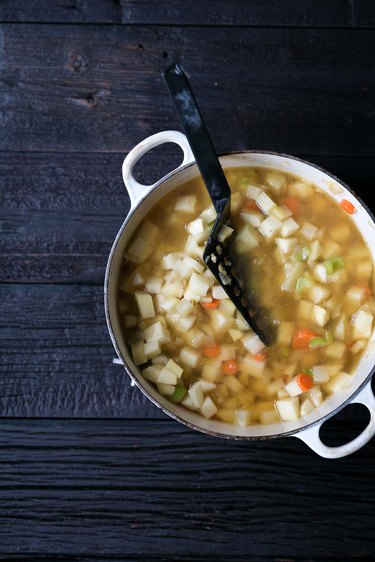
Step 6: Puree Half of Ingredients
Carefully ladle approximately half of the soup into a blender and briefly puree. You don't want to let the soup linger for too long in the blender or the starches can turn gummy. Pour the pureed soup back into the pot with the unblended vegetables and stir to combine. Stir in the heavy cream, parsley, salt and pepper, adjusting seasonings to taste.
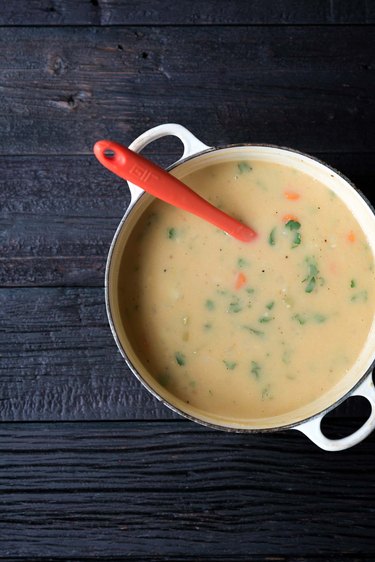
Step 7: Serve
Reheat the cooked bacon (20 second intervals in the microwave, covered, is a great way to do this). Ladle the soup into bowls. Top each bowl with the bacon, as well as optional garnishes such as scallions, cheese and sour cream.
